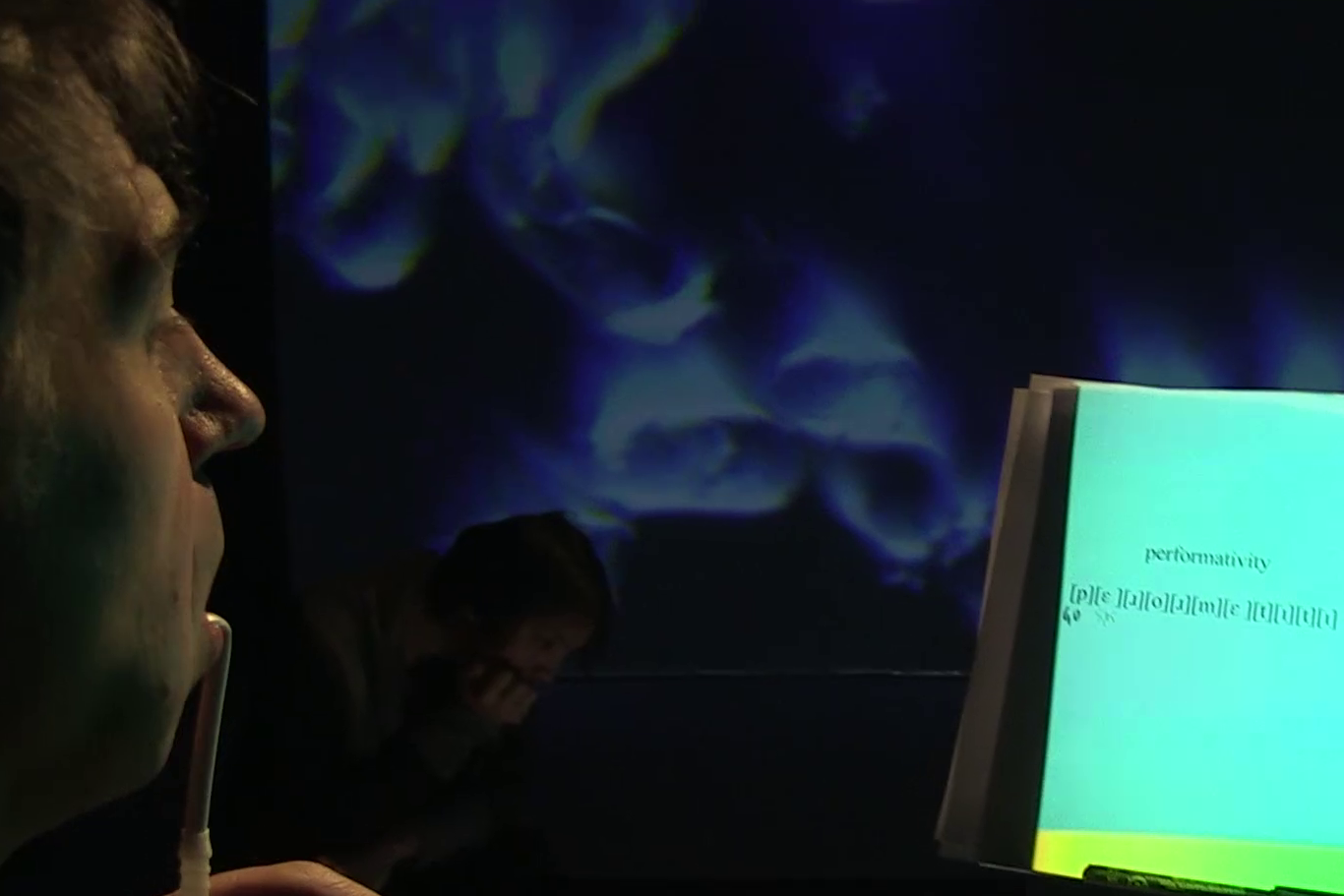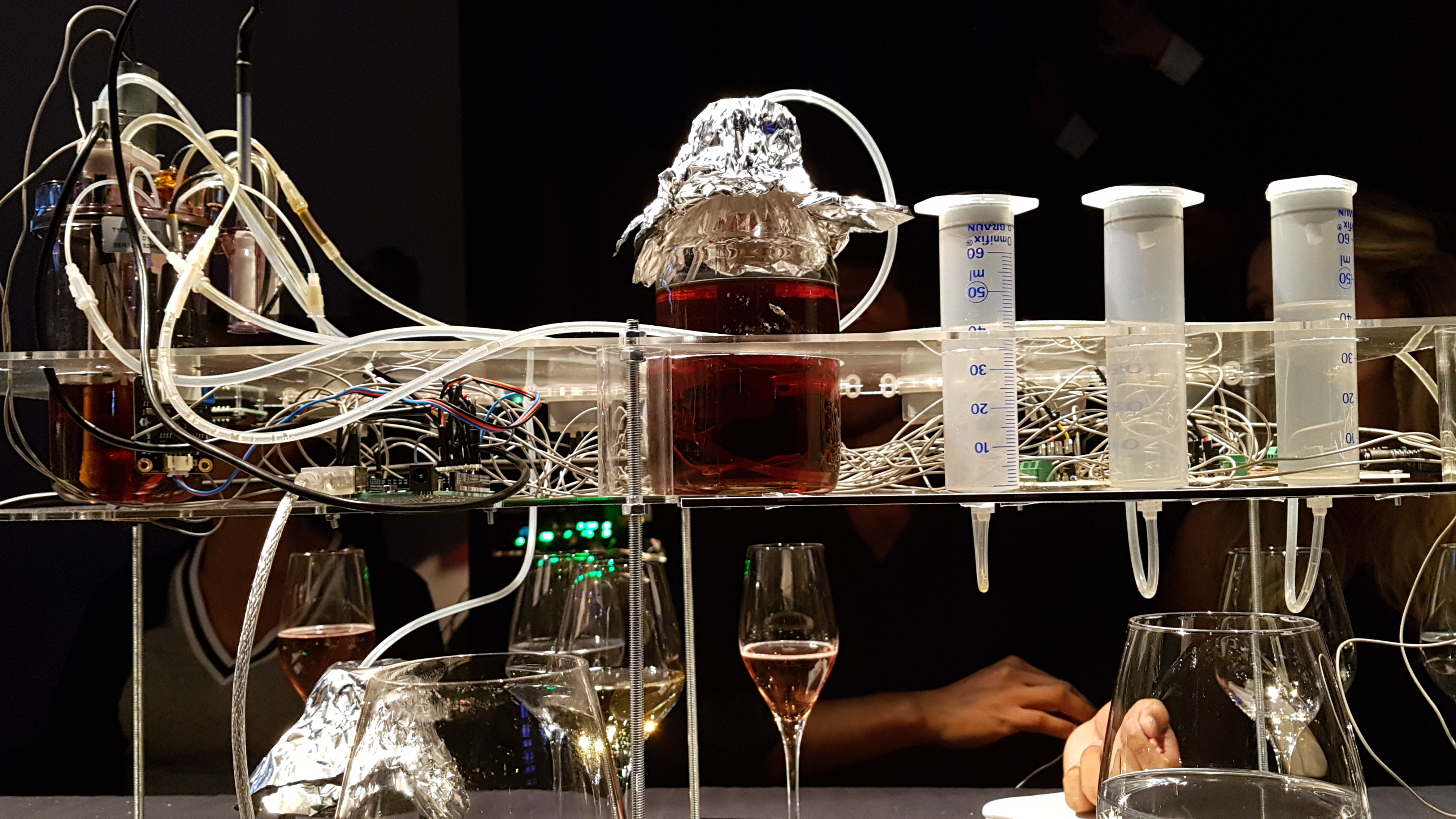
(Vienna, 03 September 2019) The fact that psychological and metabolic characteristics can be transferred from donor to recipient by faecal transplantation and that probiotic psychotropic drugs can be derived from this has given us a new understanding of the manifold potential of microbiomes. The Art & Science program led by Klaus Spiess from the Center for Public Health is focussing on this research and investigating links between the system of signs of the international phonetic alphabet, phonemes and oral bacteria.
Ars Electronica, the most famous media arts festival in the world, and the tradition-steeped "House of World Cultures" in Berlin, which specialises in art and science discourses, have now invited the program to give presentations.

Effect on the voice spectrum
"In the artistic performance 'Microbial Keywording', visitors' oral bacteria grow as a function of the phonemes they speak. This is due to the different properties of the saliva (flow, acidity, temperature) and cornification of the area of the mouth used to articulate these phonemes," explains Spiess.
Sex pheromones are then repeatedly added to selected strands of oral bacteria in culture fermenters in vitro - but no partners that the cells can remember via their 'protein memory'. The Art & Science researchers link this adjuvant to the pattern of the voice spectrogram and, using dark field microscopy, show the visitors the different effects that the voice spectrogram subsequently has upon memory, replication and cell ageing of the oral bacteria, both with and without the addition of pheromones. They refer to this as ecological adaptation to the phonemes. In keeping with this interpretation, the data of this reaction are edited as phonemes using data-to-speech software.
The speculative Art & Science project raises fundamental questions about psychosomatic semiotics and ecolinguistics, a new field of research concerned with the relationship between speech, materiality and ecology, e.g. with the parallels of the decline in biodiversity and linguistic diversity.
With the mutual conditioning of linguistic sign systems and biological growth, the program's staff members draw on their work on 'living currencies', which have been awarded several prizes and exhibited internationally.
Prominent Art & Science researchers from the USA (Paul Vanouse, Adam Brown), Germany (Hans-Jörg Rheinberger), Australia (Eben Kirksey), Denmark (Jens Hauser) and Viennese researchers David Berry, Vera Bühlmann, Oliver Schürer, Anna Echterhölter, Markus Poechtrager, Mark Rinnerthaler and Katherina T. Zakravsky, as well as the Brut Theatre and the University of Applied Arts (Ingeborg Reichle, Lucie Strecker) are all working on this international project. Parts of the project are funded by the Austrian Science Fund (FWF V 501, lead: Lucie Strecker).
The presentation will be published in 2020 in the 'On Microperformativity’ issue of Performance Research, the leading performance journal published by De Gruyter Verlag, a publishing house specialising in linguistics.
Further reading:
Caudron F, Barral Y: Mnemons: ‘Encoding memory by protein super-assembly.’ Microb Cell, 2014: 1(3): 100–102.
Fill AF, Penz H: The Routledge Handbook of Ecolinguistics. Taylor & Francis Ltd. New York 2018.